#angioletti
Explore tagged Tumblr posts
Text

--- Designer/Brand: Angioletti Designs (X) Region: Oregon, United States Time period: 2020s
#tea#tea set#teapot#teacup#cream pitcher#sugar bowl#cup and saucer#angioletti designs#2020s#queueteas
41 notes
·
View notes
Text
Such a beautiful tea service!


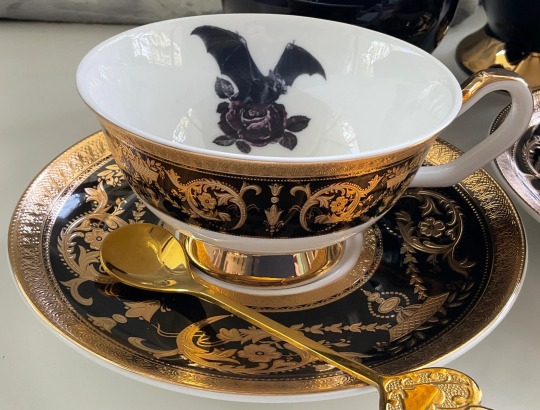
Black Gold Tea Set // Angioletti Designs
18K notes
·
View notes
Text
A Sparkling Symphony of Inclusivity and Holiday Cheer from Two Iconic Hotels in Ortigas
The heart of Ortigas shimmered with festive warmth and inclusivity on November 18, as Crowne Plaza and Holiday Inn & Suites Manila Galleria hosted their annual Christmas tree lighting ceremony, aptly named An Iconic Light-Up. Far from being just another seasonal event, this year’s celebration stood out for its powerful partnership with the Autism Society Philippines (ASP), offering a meaningful…
#Autism Society Philippines#Christmas tree lighting#Crowne Plaza Manila#Executive Chef Luca Angioletti#holiday celebrations 2024#Holiday Inn Manila#Hoteliers for a Day program#inclusive workplaces#Ortigas holiday events#press release
0 notes
Text
Credo nell’amore non casto.....
Mi spiego.....
Se l’amore fosse casto sarebbe bianco, immacolato.....
No, no, noioso, monotono, prevedibile.....
L’amore è indecente......
Non chiede, prende, sbatte il cuore contro il muro e lo fotte.....
Quindi niente cuoricini, angioletti e tinte pastello.....
L’amore è rosso:
rosso come le labbra disfatte dai baci ......
Rosso di graffi e di morsi.......
L’amore stringe, stringe forte, non può sfiorare.....
L’amore è una cosa “maschia” ha la barba sfatta si sente sulla pelle, l’arrossa.....
Quella barba non fatta per la fretta di esserci.....
L’amore segna e marchia.....
L’amore marchia rosso sangue!.. ♠️🔥

30 notes
·
View notes
Text





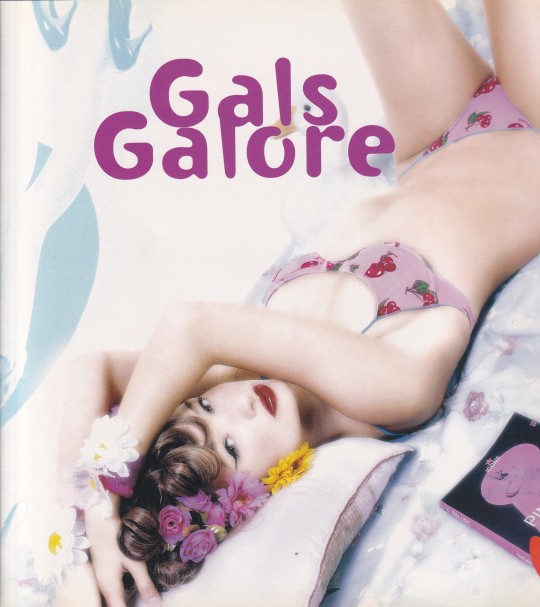



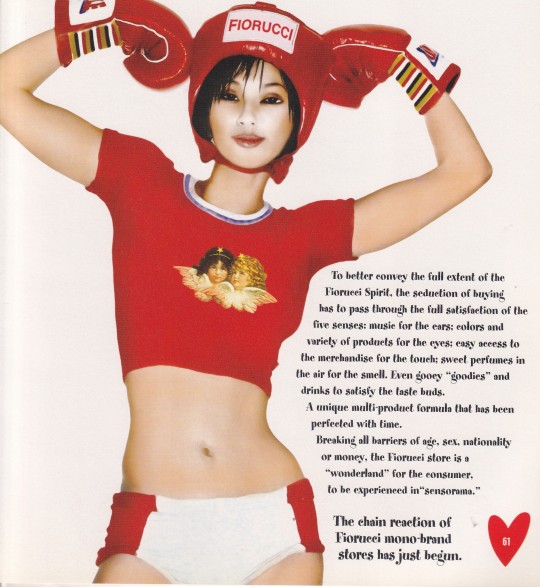
Fiorucci Story
Creative Project : Puzzle Communication Agency
Concept and copy : Manuela Cassarà (Fiorucci Design Office)
Arts Directors : Laura Fumagalli, Erica Musella (Puzzle)
Photographers : Bruce Andrew, Attilio Concari, Rofer Corona, Dxing, Nick Ferrand, Terry Jones, Douglas Kent, Edland Man, Oliviero Toscani, Eric Shemilt, Gianni Viviani
Electa, Milano 2004, 62 pagine, 25x25cm, ISBN 9788837033408
euro 40,00
email if you want to buy [email protected]
Stilista, talent scout, imprenditore e comunicatore, Elio Fiorucci apre il suo primo negozio a Milano, nel 1967, mostrando ai milanesi le ultime novità di Carnaby Street e Manhattan. Nel 1970 disegna con Italo Lupi il suo celebre logo con gli angioletti vittoriani. Lo stile Fiorucci è la ricontestualizzazione di tanti elementi tratti da culture diverse, con un pizzico di nostalgia per il passato, unito a uno sguardo al futuro: un equilibrio che esce da ogni preconcetto per muoversi tra materiali, forme e cose diversissime, senza pregiudizi, né gabbie culturali.
02/02/24
#Fiorucci#Puzzle Comm.Agency#Oliviero Toscani#Fiorucci Story#Keith Haring#fashion books#fashionbooksmilano
18 notes
·
View notes
Text
Fanno la parte degli angioletti con il cuore a pezzi poi in chat soliti coglioni depravati 🤡
14 notes
·
View notes
Text







Ghali e Rich a Roma 💓💓💓💓
ma quanto sono dolci avvolti in quelle coperte morbide? due angioletti in un letto di nuvole 🩵🩵☁️☁️☁️☁️
Ghali and Rich_ciolino on IG
#ghali and rich in rome#ghali e rich#ghalich#ghali#ghali amdouni#rich ciolino#so sweet#ma che cucciolotti#they're so cute and lovely#friendship#best friends#extraterrestrial best friend#besties#they look so relaxed#rich is the cutest eveeeeer#ma perché dorme in tuta poverino?
5 notes
·
View notes
Text
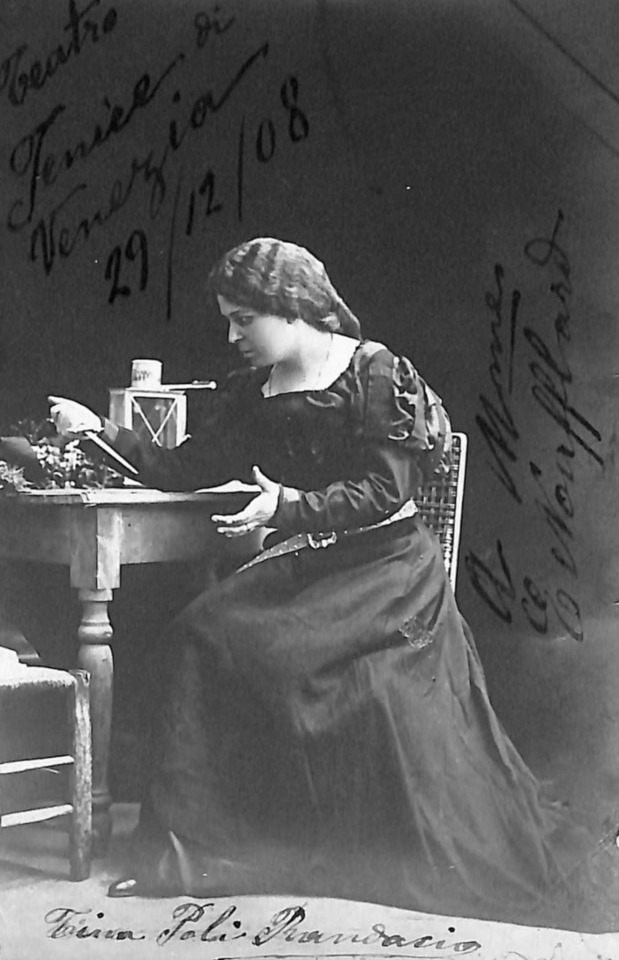
Ernestina Poli was born in Ferrara, Italy on 3 April 1879, and she studied for only a few years before making her debut at Bergamo in 1902 as Amelia in Un Ballo in Maschera. She had a huge success and was retained for another dozen performances in Il Trovatore and the then very popular Salvator Rosa. She ended the year at Massa. At this point, despite her success, she retreated from the stage for another year of training, after which she debuted at Messina in Andrea Chenier with the tenor Ruggero Randaccio. On 17 Jan, 1904 she sang Micaela for the only time in her career, again with Randaccio as her stage partner. It was not long before the couple announced that they were to be joined in life, and in the summer of 1904, shortly before a tour to South America, they were married. She immediately changed her stage name to Tina Poli Randaccio, and there are interesting and amusing confusions in some South American reviews during the tour of 1904, in which she is listed as the tenor, he the soprano. Poli was assumed to be his first name and Ruggera, hers.
The tour took the couple to Sao Paolo and Rio de Janeiro where Tina appeared as Mimi, the Trovatore Leonora, Desdemona, Aida, Maddalena di Coigny, Gioconda and Santuzza. He sang in Boheme, Andrea Chenier and Cavalleria Rusticana. The year ended at Sao Paolo with an opera called Cristo alla Festa di Purim, after which she added La Forza del Destino, Ballo in Maschera and Ernani to her assignments in Brazil. The couple traveled with the company to Manaus and Pernambuco, then returned to Europe where Ruggero announced his retirement from the stage. They decided that he would be her manager and coach, and from about this point his name was never seen on a billboard again.
On 2 December 1904 Tina debuted at Milan's Teatro Dal Verme in an opera called Jana with Bergamasco and Schiavazzi conducted by Serafin and from there she went to Oporto where she sang in Aida, Il Trovatore, Don Carlo, Pagliacci, Un Ballo in Maschera and Cavalleria Rusticana. After a short respite, the couple sailed for Mexico, and in September 1905 Tina appeared at the capitol in Les Huguenots (in Italian), Aida, Germania, Un Ballo in Maschera and Giordano's recently produced opera Siberia. The company included Virginia Guerrini, Alice Zeppilli, De Marchi and Magini Coletti, and it is not surprising, given those names, that the tour extended for four months and included visits to Guadalajara.
Turin welcomed her back to Italy when she appeared at the Teatro Vittorio Emanuele as Gioconda in January of 1907. A tour to Bucharest was arranged by Randaccio and on 11 November Tina debuted as Aida in a cast that included De Angelo, Angioletti and Bellat. On the 18th, she sang in Ernani with Angioletti, Titta Ruffo and Torres de Luna. Her season continued into the middle of December with Un Ballo in Maschera and Il Trovatore, both with Ruffo, Les Huguenots, and La Gioconda. A visit was made to Kiev and Odessa, but I have no record of her roles.
Tina debuted at Parma's Teatro Regio on 6 January 1908 in Mascagni's brand new opera, Amica and after singing in Red Roses and Damnation of Faust, she undertook a four month tour of Italy with the new work, under Mascagni's direction. The cities visited included, Firenze, Bologna, Modena, Verona, Treviso, Trieste, Ravenna, Ancona, Cesena and Forli, where she received a thunderous welcome and was hailed as the greatest soprano seen there in a generation. At Livorno she sang in the composer's Le Maschere and Iris and the tour ended at Rome's Teatro Adriano, where Tina sang eleven performances of Amica and several of Le Maschere, the latter with Juanita Caracciolo and Carlo Galeffi.
On 26 December, Tina made a much heralded debut at Venice's Teatro la Fenice as Aida with Ladislava Hotkowska and Henderson. The revival was so well received that a scheduled three performances became six. At Fiume, in April, she sang in Ernani and La Gioconda and in October she returned to the Adriano for Tosca, Aida and the world premiere of Raffaelo,by De Lunghi.
In February 1910 Tina debuted at Madrid's Teatro Real as Gioconda in a cast that included Flora Perini, Giuseppe Taccani and Ruffo, after which she sang ten performances of Aida and six of Loreley at Catania's Masimo Bellini. The spring found the Randaccios back in Brazil, where, at Rio de Janeiro, on 27 May, Tina sang Isolde for the only time in her career, though it was a moderate, if not overwhelming success. At Rio, she also sang in Il Trovatore, La Gioconda, Loreley, Tosca, Aida, and Germania, and at Sao Paolo, she added another new work, Boscaiuola. Tina's tour partners included Anna Gramegna, Krismer, Giraldoni and Viglione-Borghese, and, as had been the case in Mexico, this starry roster resulted in an extended season both in Rio and in Sao Paolo.
The most important moment of her career had arrived. On 17 December 1910 Tina debuted at La Scala as the Siegfried Brunnhilde, with the inimitable Giuseppe Borgatti in the title role. There were a dozen performances, and the production was a complete success. Fanny Anitua was an unforgettable Erda according to contemporary reviews, and the hero and heroine received memorable ovations every evening. Though hers would not be a major career in the most important of all Italian theaters, it continued at intervals for a good number of years, and included several world premiers.
In February 1911 Tina returned to Parma for La Gioconda and then took a well needed break from performing. During the summer, she learned the role of Minnie in La Fanciulla del West, and on 10 September, at Puccini's invitation, she sang the first of thirteen performances at Lucca's Teatro del Giglio with Taccani as Dick Johnson. Her success was enormous, in fact, greater than her predecessor, Eugenia Burzio, who had sung in the Italian premiere earlier in the season. Poli was immediately engaged to repeat the opera at Naples' San Carlo with Martinelli and Viglione-Borghese and at Bari's Teatro Petruzzelli with Corti and Mariano Stabile. After a debut at Palermo's Massimo as Gioconda in March 1912, she sang Minnie at Monte Carlo, again with Martinelli and Viglione-Borghese, and in late May she debuted at the Paris Opera as Minnie in a gala performance with Enrico Caruso.
In November, Tina sang in La Gioconda at Genoa and then prepared for the Scala premiere of Fanciulla. There were many sopranos who had vied for the honor, whose partisans had lobbied intensely for them, and the uncertainty had been a major story in Italian newspapers. Burzio reigned at Scala, but it was not to be. Tina's reputation as Minnie was by now so secure that both Scala's management and the composer agreed that she deserved the honor. On 29 December, before a star studded audience, the Milan theater presented La Fanciulla del West for the first time with Poli Randaccio, Martinelli and Galeffi. Tullio Serafin was on the podium, and the clamor was so enormous that the opera was repeated fourteen times.
Tina repeated Minnie at Monte Carlo in February 1913 with Martinelli and George Baklanov, after which she sang the role at the site of its Italian premiere, the Costanzi of Rome. In the spring there were concerts at Modena in honor of the centenary of Verdi's birth and on 15 December, Tina sang in the world premiere of Mascagni's Parisina at La Scala under the composer's baton. The cast included Luisa Garibaldi, Hipolito Lazaro and Galeffi, and there were twelve performances.
On 10 February 1914 Poli sang in the world premiere of Smareglia's Abisso and on 2 April in the world premiere of Alfano's Ombra di Don Giovanni, both at La Scala. In May she sang in Tosca at Milan's Teatro Carcano with Garbin and Viglione-Borghese and in October Tina participated in one of this century's most important stage debuts, that of Beniamino Gigli as Enzo, at Rovigo, on 15 October. It was the scene of veritable riots; a star had truly been born, and there were thirteen performances. Tina's year ended with Un Ballo in Maschera at Piacenza, a revival shared with the equally celebrated Celestina Boninsegna.
Rome's Costanzi welcomed Tina back as Gioconda, Tosca and Minnie in the winter of 1915, and after Gioconda at Naples and Aida at Firenze, she sailed for South America and her debut at the Teatro Colon of Buenos Aires. On 25 May, Poli debuted as Gioconda in a cast that included Perini, Lazaro, and Riccardo Stracciari. La Prensa referred to her as "a major talent whose voice can send shivers down one's spine, so present and immediate is the reaction". On 6 June she sang Santuzza and on the 17th, she sang in a concert with Caruso, Bernardo de Muro, Mario Sammarco and Lazaro. The season ended with Tosca and had included performances with the company at Cordoba and Rosario, where she sang Tosca and Santuzza, and at Tucuman, where she sang Santuzza.
Tina traveled from Argentina to Santiago, Chile, and on 27 August, she opened the season at the Teatro Municipal in La Fanciulla del West. The work was so well received that an additional performance was added; it was the only opera to be seen as many as four times. She stayed at Santiago for two months, singing Tosca, Aida, Gioconda, Santuzza, the Trovatore Leonora and Maddalena di Coigny and appeared as Aida, Tosca, Gioconda and the Trovatore Leonora at Valparaiso. Tina returned to Buenos Aires in late October where, at the Teatro Coliseo, she sang all of her Chilean roles except for Maddalena, and after a brief rest, she undertook a long tour of the Caribbean Basin. World War I was in its most intense period and the safety of the Western Hemisphere certainly seemed more attractive than the dangers of Europe.
On 29 January 1916 Tina debuted at Havana as Aida, and later sang in Tosca, Il Trovatore, Cavalleria Rusticana, Iris, La Gioconda, Les Huguenots, and La Fanciulla del West. Her tenor partners were Lazaro and Zinoviev; Enrico Roggio carried most of the baritone weight and Amelita Galli-Curci appeared with Poli in Les Huguenots (in Italian). The company stayed at the Cuban capitol for nearly two months, then toured to Cienfuegos, Camaguey, Santiago de Cuba, Mananzas and in the late spring, to Costa Rica.
In November Tina returned to Italy for Tosca at Bologna with Aureliano Pertile and Jose Segura-Tallien and in January 1917 she sang at Milan's Dal Verme in a gala concert, including act 3 of Aida and act 4 of La Gioconda. At La Spezia she sang Aida, and in June Tina debuted at Zurich as Tosca with Gubellini and Sammarco. After singing Santuzza at the Swiss theater, she returned to the Dal Verme for Aida and at Genoa, she sang in La Gioconda with Vita Ferluga, Folco-Bottaro and Galeffi.
Tina decided that the climate in Europe was not what the doctor ordered, and in fact, work was difficult to find for nearly everyone in 1917. Many of Italy's most important theaters were closed, and those that remained open presented very shortened seasons. Havana again beckoned and Tina returned in December for Aida, La Fanciulla del West, Les Huguenots, Tosca, La Gioconda, L'Africaine, La Boheme and a new opera, Doreya. Her colleagues included the tenor, Jose Palet, Edith Mason, Maria Barrientos and the basses, Nicoletti-Korman and Virgilio Lazzari. The tour again included Camaguey, Cienfuegos and Santiago. In mid March 1918, the company moved to San Juan and Ponce for a two month season in Puerto Rico. Poli sang the same roles and added Amelia in Un Ballo in Maschera. In June, at Caracas, Venezuela she sang in Aida, Tosca, Les Huguenots, La Gioconda and Cavalleria Rusticana.
The Great War was over and Tina returned to the safety of a victorious Italy for La Gioconda at Bologna, Milan's Teatro Lirico and Firenze's La Pergola. On 18 December she reappeared in glory for the first of eleven performances of Aida at La Scala. The next few months were spent at Turin with Cavalleria Rusticana and Aida. It was during the revival of Aida that Tancredi Pasero made his absolute opera debut as Il Re, substituting for an indisposed colleague. It is with some pride that the author acknowledges this event, since Pasero's debut has always been listed as at Vicenza in La Sonnambula much later in the year. And with pleasure, I also acknowledge that this information was kindly provided by Robert Tuggle of the Metropolitan Opera Archives.
After La Fanciulla del West at Trieste's Teatro Rossetti, in late November, Tina debuted as Aida at Barcelona's Liceo and in December she completed her engagement as Gioconda. In January 1920 Tina sang thirteen performances of Aida at Trieste's Teatro Verdi with the stellar cast of Giuseppina Zinetti, Miguel Fleta and Carmelo Maugeri. Rome's Costanzi welcomed Poli back with seven performances of La Gioconda and Genoa saw her as Santuzza in March. May was spent at the Fenice of Venice, where Tina sang in Suor Angelica with Elvira Casazza and in Aida. In June, she traveled to London for a debut at Covent Garden in Tosca with Fernand Ansseau and Dinh Ghilly and was very poorly received by both public and press who recoiled from her strong vibrato and melodramatic impersonations. Tina left London after one performance, never to return.
However, on 31 July she was welcomed with an enormous ovation at the Verona Arena when she sang in Aida with Zinetti and Pertile. After La Gioconda at Turin's Teatro Chiarella, Tina returned for a very long season at Barcelona, appearing in Aida, La Gioconda, Un Ballo in Maschera, Lucrezia Borgia, Cavalleria Rusticana and Ernani, as well as in act two of Tosca during a gala benefit. Her reviews were nothing short of magnificent and in Gioconda, she was heralded by several critics as the greatest that the city had ever seen or heard. The Liceo and Tina Poli Randaccio would continue their love affair over several more seasons.
In 1921, Tina appeared at Brescia and Trieste for La Gioconda, Palermo for La Gioconda and La Fanciulla del West, Rome for Aida, the Milan Arena for La Gioconda, Vicenza for La Fanciulla del West with Ismaele Voltolini and Stabile, Venice for La Gioconda and at Parma on 29 December in a stellar revival of the Ponchielli work with Giannina Arangi Lombardi as Laura, Irene Minghini Cattaneo as La Cieca, Voltolini as Enzo, Noto as Barnaba and Bruno Carmassi as Alvise.
The new year found her in revivals of La Fanciulla del West at Naples, Milan's Carcano and at Turin where she was joined by Voltolini and Apollo Granforte. The Dal Verme hosted Tina in Il Trovatore with Zinetti, John O'Sullivan and Benvenuto Franci in October, and after eleven performances of Les Huguenots at Bologna with O'Sullivan, Poli returned to Barcelona for Aida with Aurora Buades and Lazaro, Tosca with Lazaro and Les Huguenots with Cassini and Lazaro.
Tina debuted at Cairo on 27 January 1923 as Gioconda and continued her season as Minnie and Santuzza, after which she repeated all three roles at Alexandria. Santuzza was the role of her return to Milan's Teatro Lirico in May and on 11 August she appeared at Venice's Lido di San Nicola in Aida with the riveting Gabriella Besanzoni. In November, Trieste saw Poli as Gioconda and on the 22nd, she sang in a gala performance of Aida at Rome's Costanzi in honor of the King and Queen of Spain. Zinetti, De Muro and Enrico Molinari completed the stellar cast and the conductor was Mascagni. Tina's year ended at Mantua with four performances of Tosca, after which she appeared at Brescia's Teatro Grande in Loreley. Neapolitan audiences appreciated her Trovatore Leonora and Romans admired her in L'Africaine with Pasini, Giulio Crimi, Molinari and Pasero and in Tosca with Crimi and Stracciari.
In the summer Tina debuted at Vienna as Aida with Maria Gay, Giovanni Zenatello and Viglione-Borghese, a revival that had to be repeated sixteeen times before moving to Kaiserdam, Germany in September. Berlin saw her Santuzza before she returned to Barcelona in November for another daunting season. This time Tina sang in Aida, Les Huguenots, L'Africaine and a new work, Suor Beatrice. Though Tina Poli Randaccio is primarily remembered in Italy as the quintessential Italian dramatic soprano, she had by now appeared in twenty countries, and with the singular exception of England, had been rapturously received in all. There would be a twenty first.
1925 began at Naples with L'Africaine and on 30 January, Tina returned to the Costanzi for La Fanciulla del West with Crimi and Parvis. After further performances of Tosca and Aida at the San Carlo in February, she returned to Rome for Il Trovatore and Aida. The Lido di San Nicola at Venice feted Tina to a serata di gala on 1 August as the prelude to an engagement as Aida at the Fenice, after which she sang in Tosca at Rimini with Pertile and Viglione-Borghese. In October, she returned to Genoa for La Gioconda, and on Christmas Night 1925, at Bari's Teatro Piccinni, she sang Norma for the first time. Though she sang six performances, it was not a great critical success, and she decided to drop plans for several other planned engagements in the role.
Trieste's Teatro Verdi hosted Tina in Abisso and Il Trovatore at the outset of 1926, after which she sang in La Fanciulla del West at Genoa's Carlo Felice, in Aida and a Benefit Concert at Rome's Costanzi, and in Il Trovatore at Naples' San Carlo, the last with Ebe Stignani. Poli had been singing for a quarter century and it had been an enormously intense and successful twenty five years, but Father Time, as he will, began to play his inevitable role. After Naples, it was not until September that Tina again appeared on a stage, when she debuted at the Athens Arena in Aida with Franco Battaglia. And so, her year ended.
La Scala beckoned one more time, and, on 9 March 1927, Tina sang in the world premiere of Guarino's Madame de Challant with Francesco Merli and Carlo Morelli, and with these three performances she said farewell to the theater that had presented her as its first Minnie, and in four world premieres.
Naples again welcomed Tina for Il Trovatore and Aida, and she debuted at Modena's Teatro Comunale in April as Gioconda, and, a week later she unveiled the role of Turandot at the Comunale. At Milan's Carcano she sang in Isabeau and at year's end she returned to Barcelona for the last time, appearing in Aida and La Gioconda, with identical casts, Zinetti, Aroldo Lindi, Granforte and Vela.
In February of 1928 Tina sang in Turandot at the San Carlo and in February, she bade farewell to Naples as Gioconda. In April she returned to Rome, where, at the newly named Teatro Reale, she sang for the last time, when she appeared in Il Trovatore. Her last engagement of 1928 was as Isabeau at Livorno in a revival conducted by Mascagni.
In 1929, Tina sang Gioconda and Santuzza at Milan's Lirico, Turandot at Nice, which is listed in the program as the French premiere of the Puccini opera, Aida at La Spezia and Tosca at Firenze's Teatro Verdi. In 1930, her only Italian engagements were at Genoa where she sang Isabeau, Aida, and Santuzza, after which she sailed to Caracas for a season as Gioconda, Tosca, Maddalena di Coigny, Santuzza and Elena in Mefistofele. There would be no further engagements outside of Italy, and few enough in her homeland though she continued to appear for another six years.
In 1931, she sang Santuzza at Bergamo, Gioconda for Italian Radio both at Rome and Turin, Gioconda in Palermo's Teatro Garibaldi, Nedda at Isola, and Aida at Biela and at Rome's Teatro Adriano. In 1932 she sang in Gioconda at Crema and in Tosca at Milan's Teatro Puccini and at Brescia. 1933 found her again at the Puccini for Isabeau, at the Adriano for Minnie and Aida, and at Milan's Politeama for Santuzza.
In 1934 she returned to Norma, which had played so minor a role in her career, and she sang it at both Monza and the Lido of Pesaro. At Pesaro she also sang Santuzza, a role repeated at Milan's Arena. At year's end she sang Aida at Milan's Nazionale and at the Puccini she sang in La Forza del Destino, a role repeated at Foggia in early 1935. At Foggia she also sang Santuzza. The end came in early 1936, where at Asti and finally at Modena Tina Poli Randaccio sang her opera farwell as Santuzza. The career had encompassed nearly fifty roles, and had presented her on the stages of the World over fifteen hundred times, a monumental parade of memories for nearly two generations of opera goers.
After retiring from the stage, Tina abandoned musical life almost entirely, and died at Milan on 10 February 1956.
#classical music#opera#music history#bel canto#composer#classical composer#aria#classical studies#maestro#chest voice#Tina Poli Randaccio#dramatic soprano#soprano#classical musician#classical musicians#classical voice#classical history#classical#La Scala#Paris Opera#musician#musicians#history of music#historian of music#music education#music theory#diva#prima donna
3 notes
·
View notes
Text
Sto leggendo delle cose un po’ lunari su come fosse l’Italia “prima di Berlusconi” (una specie di paradiso dell’etica pubblica e privata e del senso civico).
Ora.
Abbiamo creato un intero genere cinematografico basato sull’essere un Paese popolato di persone disprezzabili pronte a ogni bassezza (“commedia all’italiana” l’abbiamo chiamata, giusto per ribadire), ben prima delle tv private.
Berlusconi ha di certo incanalato in precise forme un modo di essere, ma non è che prima di lui fossimo degli angioletti, su.
6 notes
·
View notes
Text

Credo nell'amore non casto....
mi spiego...
se l’amore fosse casto sarebbe bianco, immacolato...noioso.. monotono, prevedibile...
l’amore è indecente..
NON chiede, prende..
sbatte il cuore contro il muro e lo fotte!!...
quindi NIENTE cuoricini..bacetti.. angioletti e tinte a pastello...
l’amore è rosso ..
rosso come le labbra disfatte dai baci....
rosso di graffi e di morsi....
l’amore stringe, stringe forte.. non può sfiorare....
l’amore è una cosa “maschia” ha la barba sfatta... si sente sulla pelle..l’arrossa, quella barba non fatta per la fretta di esserci....
l’amore segna e marchia...🖤
3 notes
·
View notes
Note
(Sono anon del papiello) Tranquill, non ho paura a dire le cose come stanno. So che nel fandom lo si pensa, ma non lo si ammette ad altr per paura di sembrare pazz, irrispettos, etc. A me fregacazzi, si vede lontano un miglio che Charles e Carlos hanno qualcosa chiaramente tra loro che va avanti concretamente secondo me da parecchio tempo. O vogliamo pensare che su venti piloti in pista, tutti siano etero 💯? O che nella lunga storia della F1 nessun pilota si sia preso nemmeno una cotta per il compagno di squadra? Anche statisticamente parlando, è improbabile che non sia così. Ripeto, molte persone chiudono gli occhi davanti alla realtà perché le loro fantasie su uno dei due o entrambe cadrebbero, oppure perché sono due angioletti puri che non potrebbero MAI organizzare storielle pr/fake per distogliere l'attenzione da cosa sta REALMENTE accadendo. Quel mondo agisce secondo dinamiche economiche e di gossip che nemmeno ci immaginiamo. Carlos MAI si sarebbe sposato Isa (storia fake organizzata dai suoi), e per evitare di rimanere imprigionato con lei l'ha scaricata e si è preso la prima sottomano (basta googlare Rebecca per capire chi sia e che mestiere faccia). Charles invece ha questa Alex giusto per dire di avere qualcuna di fianco, ma è completamente distaccato da lei (e la differenza con la sua ex è palese e questa viene appioppata sempre a Joris, che le fa da babysitter)... Ma è coerente nel prendersi ragazzette che vogliono solo la sua luce riflessa, farsi i viaggi con lui e poi ciao ciao quando lui si incapriccerà della solita tizia moretta ricca sfondata di Monaco per tranquillizzare il popolo ferrarista che il Predestinato è 💯 etero. Comunque ho visto che hai nominato Nico/Lewis e Seb/Kimi, per cui ti darò la mia opinione non richiesta su loro: i primi per me chiaramente hanno avuto qualcosa tra loro (Lewis è palesemente queer), e la lotta per il mondiale li ha devastati. Nico ha usato tutti i punti deboli di Lewis per indebolirlo, gli ha spezzato il cuore facendo così e non lo ha MAI perdonato per questo infatti (non gli rivolge la parola infatti). Kimi non è uno che mi sembra badi molto al sesso del partner (è nordico in questo), e Seb chiaramente gli piaceva in quel senso (ricambiato secondo me) - semplicemente, non hanno mai attraversato quella linea, perché Seb non è un traditore come Charles e ci tiene alla sua famiglia e a sua moglie. Ma quella tensione e quella confidenza eccessiva stava, eccome se stava. Se noti, è la stessa degli Charlos, ma ha una forma diversa in questi ultimi: si vede che hanno consumato per me, perché la loro tensione è totalmente differente nel 2023 rispetto al 2022 (anche se a volte penso che già da agosto 2022 questi due possano aver fatto roba, ma certamente nel video dei biscotti di Abu Dhabi Charles era proprio con pensieri sessuali verso Carlos scritti in faccia). Ciao! PS: esattamente, si sono visti nel Sud della Francia (quindi zone vicino Monaco, come Cannes, Nizza, etc) per me. Lontano dalle pagliacciate paparazzate, dalle tipe che hanno accollati, dagli amici e dalla famiglia. E Charles, che sa mentire veramente in modo pessimo, si è sgamato da solo, e Carlos ha dovuto cercare di aggiustare la situazione, ma il danno era ormai fatto! E anche qualche giorno fa, nel video in cui parlano di Carlos che sperimenta nuove cose nel suo stile e Charles interviene dicendo dei calzini... Ecco, non credo che stessero parlando di calzini ormai tra loro.
anon sei il mio eroe, cazzo tu si che dici le cose come stanno e lo apprezzo un sacco, anche perché hai palesemente ragione!
anche secondo me ceh oggettivamente è impossibile che su tutti i piloti mai esistiti E su quelli in griglia non ce ne siano stati alcuni queer, ceh è oggettivamente impossibile e secondo me i piloti sovracitati ne sono degli esempi più che candidi e non dovremmo nasconderci dietro un dito
semplicemente molti pensano che se sono persone queer allora automaticamente devono essere gay (cosa che, ceh no) quindi tutti quelli sposati (tipo seb o kimi) non possono essere queer perché “eh ma è impossibile!!!”, dimenticandosi completamente di noi persone bi et similia 💀
la bottom line è che, come hai detto tu, ci sono delle dinamiche economiche e di gossip che noi davvero non potremo mai sapere, e quindi chi lo sa, le relazione di charles e carlos sono entrambe solo pr? noi non lo sapremo mai probabilmente, ma comunque io concordo con te nel dire che sì secondo me sono davvero solo pr perché non hanno senso di esistere oggettivamente 💀
va bene tutto eh, però dubito che una relazione si costruisca in così poco tempo dopo la rottura di una relazione più duratura, ceh su che basi la costruisci??? sicuramente non sull’amore, questo è poco ma sicuro
(piccolo side track poi, sono io l’unica persona ferrarista che si sentirebbe molto “meglio” se charles fosse queer in qualche maniera e libero piuttosto che fare così con relazioni del cazzo in cui entra tanto per? boh, dico)
concordo anche sulla cosa di lewis/nico (sicuro qualcosa è successo, dal 2015 però la relazione è cambiata per non tornare mai a essere la stessa e dubito tornerà mai a essere una frazione di come era prima) e seb/kimi (se dovessi dire tutto quello che penso di loro due lo spazio non basterebbe da quanto li amo e da quanto ho da dire (sono i miei fave si nota ahah???) però si, kimi è palesemente pan e seb è bi e sicuramente si piacevano un sacco, ma hai ragione nel dire che seb non è un traditore quindi non avrebbe mai davvero fatto qualcosa. e sì i parallel tra la simi e la charlos sono molto MOLTO evidenti ed è per questo che le due coppie sono le mie preferite 🥰)
vero anche nel dire che charles e carlos hanno fatto qualcosa, si vede moltissimo la differenza col passare degli anni (anche solo 2021/2022/2023) e qualcosa è successo, anche se il quando magari è un po’ difficile da collocare ahah (ma poi non parlarmi del video dei biscotti……………..vi giurooo che erano lì lì per scopare direttamente su quel tavolo non ci provavano nemmeno a essere subdoli 😭)
per il ps hai also totalmente ragione, ormai secondo me l’ho detto, sono sposati ma non lo sanno ancora perché la domesticità??? il boyfriend behavior??? hello come si fa a non notarlo??? 😭
comunque, as i said, apprezzo moltissimo questi papiri quindi pls se vuoi keep em coming!!!! ho amato tantissimo rispondere!!! grazie davvero di aver preso del tempo per scrivere, te ne sono gratx <333333
4 notes
·
View notes
Text

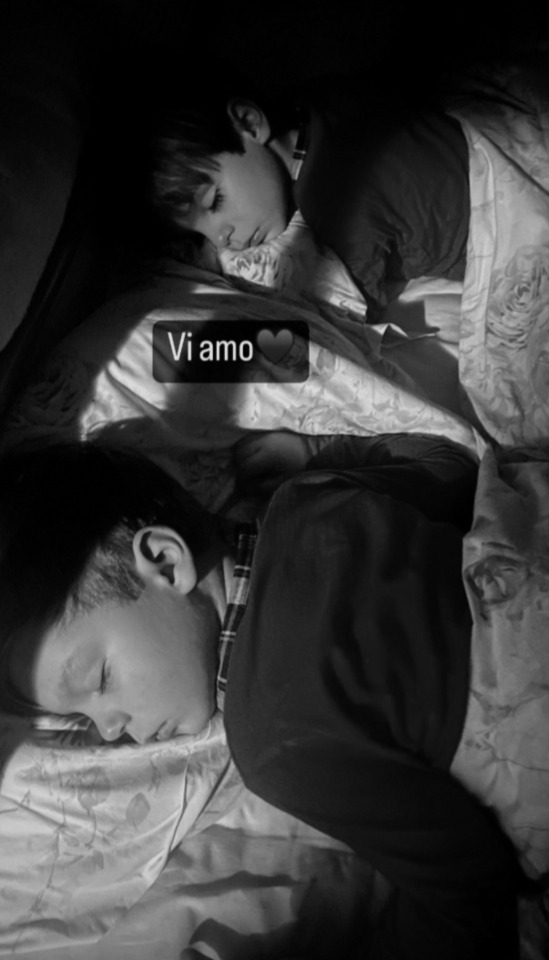
Due angioletti che da svegli sono dei diavoletti.
2 notes
·
View notes
Text
I’d swear this is Angioletti Designs on Etsy but they don’t have this plate in stock atm so maybe not

Finally bought some good china
63K notes
·
View notes





